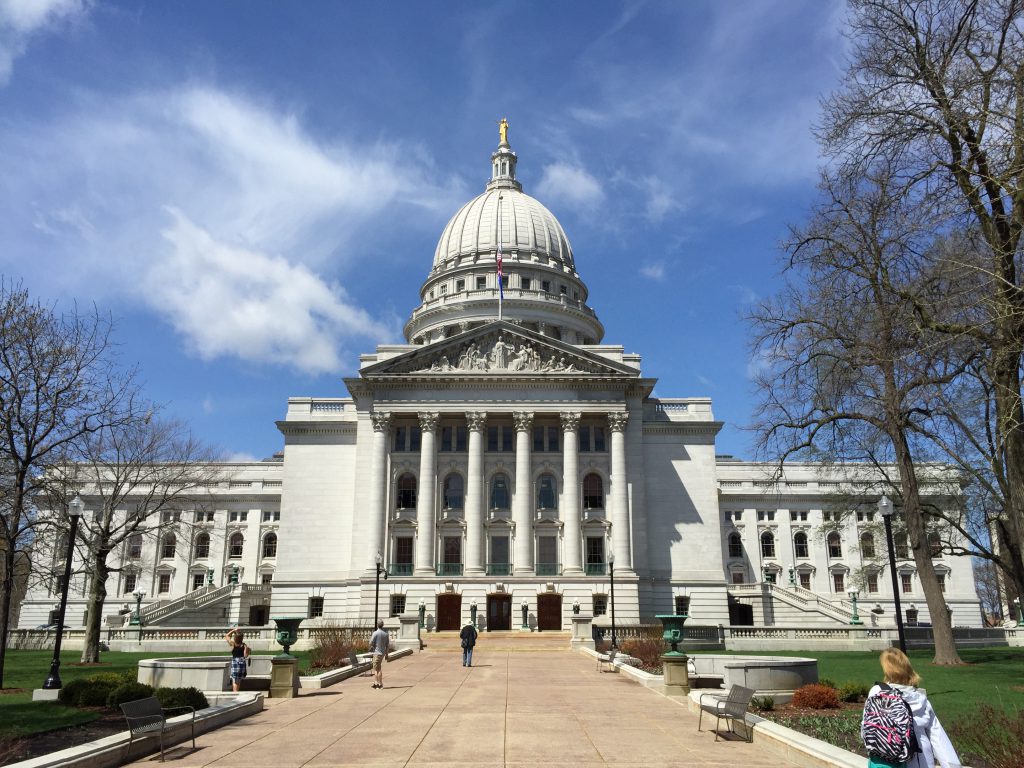Spending on Medicaid, Prisons Skyrockets
Up much faster than inflation in last 20 years, crowding out other spending.
Twenty years ago, we had just survived the Y2K fear that all of our computers would shut down on Jan. 1, 2000, unable to handle dates beyond 1999. Our computers did just fine.
But consider how state government spending priorities have changed over those 20 years. Legislative Fiscal Bureau (LFB) summaries of general-fund spending for the 1999-2001 and 2019-21 biennial budgets show that programs can be lumped into two categories – biggest gainers and biggest losers.
Another way to measure the explosion in MA costs: In the 1999-2001 budget, MA spending accounted for 9% of total general-fund spending. But that percentage almost doubled — to 17% — in 20 years.
No one yet knows the impact that COVID-19 will have on the 2021-23 budget that Democratic Gov. Tony Evers will give Republicans, who control the Legislature, in February.
But MA costs could easily be the toughest budget number for Evers and Republican leaders to agree on, because the governor will again ask that MA be expanded, largely with federal funds, to provide health care for more middle-income Wisconsin residents.
In his Nov. 20 budget update, Department of Administration Secretary Joel Brennan said expanding MA would mean that only $597 million more in general-fund dollars would be needed to fund MA through mid-2023. Expanding MA “will save state taxpayers $588 million in the upcoming biennium, and allow the state to draw down more than $1.5 billion in additional federal dollars, while providing affordable health coverage to an additional 98,000 Wisconsinites,” Brennan added.
But Republican leaders blocked the governor’s request to expand MA in 2019 and plan to kill it again. In separate year-end interviews, two GOP leaders — Rep. Mark Born, new cochair of the Joint Finance Committee, and new Senate Majority Leader Devin LeMahieu — opposed expanding MA.
Evers has said his next budget proposal will include criminal-justice reform that would cut prison system costs.
A third big gainer over 10 years was School Choice, which allows students to attend private schools with a state-paid voucher, though no percentage growth can be calculated. LFB reports didn’t include School Choice as a major spending item in the 1999-2001 budget, but said it will cost taxpayers $726 million in the current budget.
State spending for K-12 public schools rose the third most of any category in total dollars over this period, and yet it trailed the rate of inflation. LFB reports show that K-12 school aids totaled $8.6 billion in the 1999-2001 budget, and $12.25 billion in the current 2019-21 spending plan. That’s a 42% increase, below the 53% rate of inflation.
K-12 spending accounted for 38% of all general-fund spending 20 years ago, but was down to 32% in the current budget.
Carolyn Stanford Taylor, the state superintendent of public instruction who is not seeking re-election in April, has requested $1.6 billion more for the 2021-23 budget, partly due to the impact of COVID-19 on schools. Stanford Taylor wants more for K-12 schools than the $1.3 billion jump in general-fund tax collections by mid-2023 that Brennan predicted in November. Evers, a former superintendent of public instruction, must reconcile that gap in his budget proposal.
What state program was the biggest loser over the last 20 years?
That 19% drop in state aid, coupled with inflation and state limits on property tax levies have left local government leaders complaining that it forces them to continue cutting services.
Another loser over the 1999-2001 budget was Wisconsin taxpayers.
Why? The 1999-2001 budget included a one-time sales tax rebate of $700 million. That won’t be repeated in the pandemic-stressed budget Evers and Republican legislators must agree on by July 1.
Steven Walters is a senior producer for the nonprofit public affairs channel WisconsinEye. Contact him at stevenscotwalters@gmail.com
If you think stories like this are important, become a member of Urban Milwaukee and help support real, independent journalism. Plus you get some cool added benefits.
The State of Politics
-
A Wisconsin Political Trivia Quiz
 Dec 15th, 2025 by Steven Walters
Dec 15th, 2025 by Steven Walters
-
The Fight Over Wisconsin’s House Districts
 Dec 8th, 2025 by Steven Walters
Dec 8th, 2025 by Steven Walters
-
The Battle Over On-Line Betting
 Nov 24th, 2025 by Steven Walters
Nov 24th, 2025 by Steven Walters






















